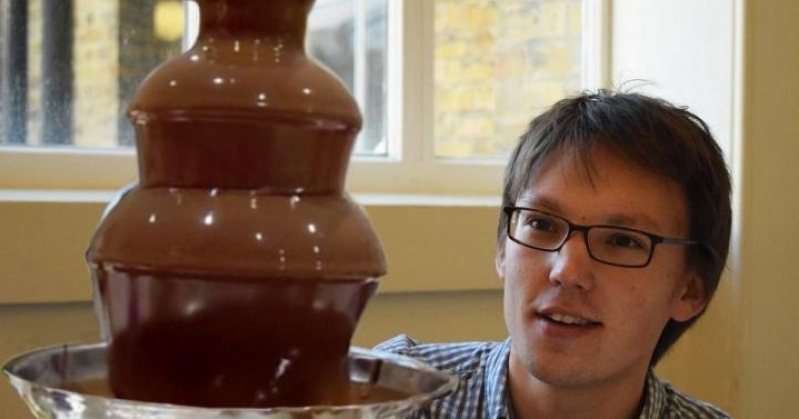
Chocolate fountains are fun to watch. These mini-Wonka factories can teach kids about one of the greatest discoveries of humankind. A study published in European Journal of Physics details how this simple culinary product is linked to Newton's Classical mechanics.
In the published paper, scientists from University College London studied why sheets of molten chocolate go inward as it rolls down from the top of the fountain instead of splashing straight to the ground.
Liquid chocolate, ketchup and lava are some of the substances that have properties different from the Newtonian fluid. They are called non-Newtonian fluid, because they flow differently compare to water and other kinds of liquid. Understanding how these fluids navigate through surfaces is a great challenge for young scientists. However, many of these substances can be used as teaching tools---except lava-- to study physics.
"Apart from the fact that they're super cool and delicious, from a scientific perspective, chocolate fountains provide a really nice introduction to non-Newtonian fluids," said Adam Townsend, co-author of the study from University College London.
As the chocolate goes up through the pipe inside the fountain, it has to overcome gravity to reach the top. When it reaches the topmost part of the fountain, it becomes thinner, providing a good introduction to the theory of lubrication. This theory is a complex topic for young students because it tackles what happens when a liquid flows against a solid surface.
In the final step, which is the most interesting, the chocolate falls from the top. However, the chocolate does not splash on the ground; instead, it pulls inward towards the interior of the fountain.
"We want them to know that math is in places you don't expect, it's interesting, it's worthwhile to study it," researchers said in a published report from the Smithsonian.
The Classical physics, which was illustrated by a chocolate fountain, is the study of matter and energy. It was worked out by 16th-century physicist Sir Isaac Newton. Countless scientists later elaborated the theory.
To formulate this theory, Newton observed how things occur in the same way each time, like falling of an apple from its tree. Newton then made equations that let him predict the laws of nature.
Newton's ideas on motion and gravity dominated the field of physics for about next three centuries.







